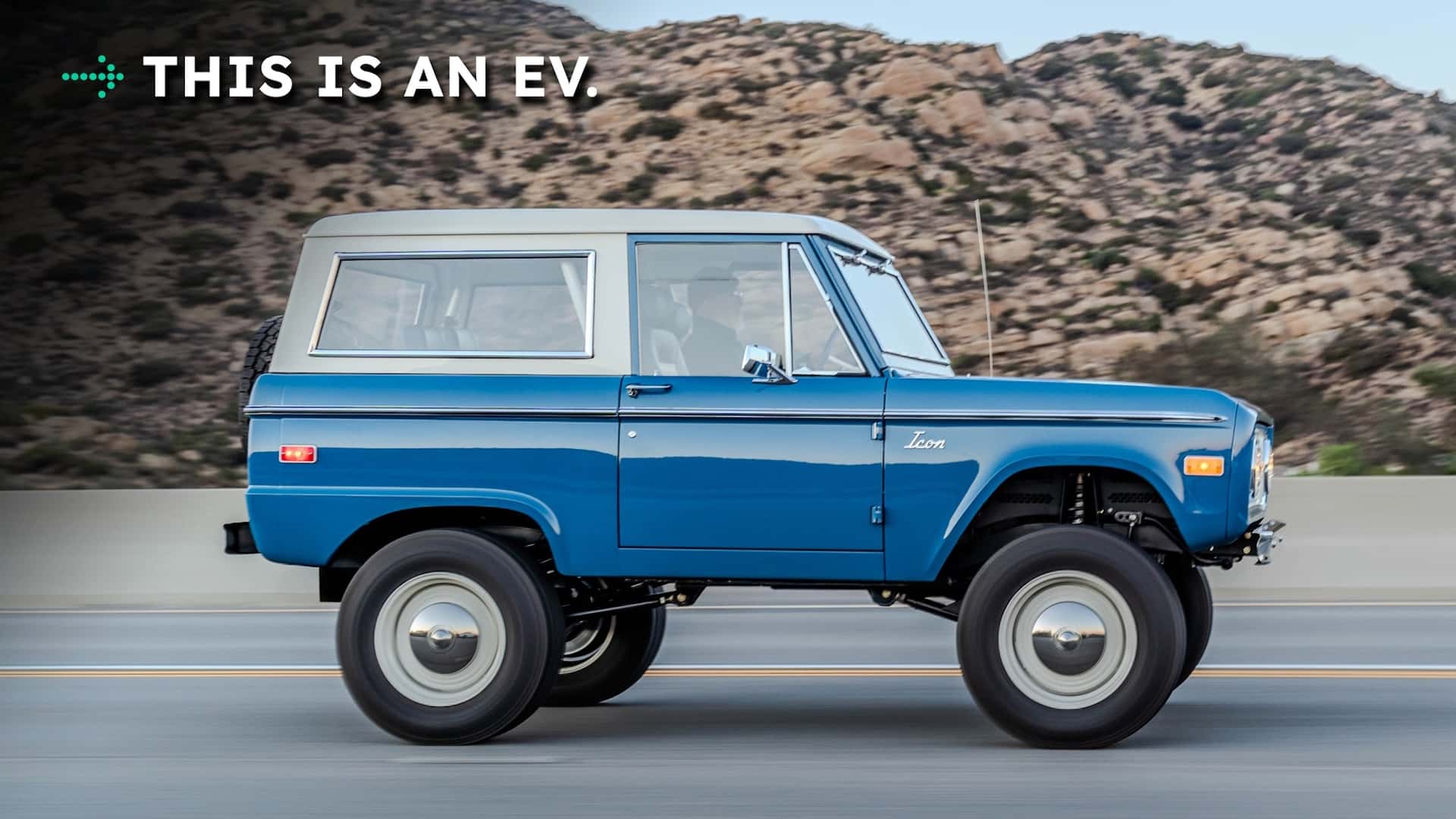
Put aside everything you think you know about battery-exchanged electric restorations. The newest offering from Icon, the Bronco model, comes with over-the-air update capabilities as well.
There’s no shortage of electric restomods These days, for sufficient compensation, companies readily remove the gas-powered engines and intricate traditional transmission systems from classic cars or trucks with powerful canons installed. They then replace them with more straightforward and environmentally friendly electric vehicle components. Some manufacturers have started providing this service. aftermarket options fresh from the production line, ready for your enjoyment and experimentation.
This sector has been established for quite some time, yet as it flourishes, Icon of Chatsworth , California, and Austin, Texas Moment Motor Company have raised the bar significantly. Following countless hours of research and development, they have utilized their accumulated knowledge over the years to unveil a series of 10 electric vehicles based on the Ford Bronco model, priced at $449,000 each.
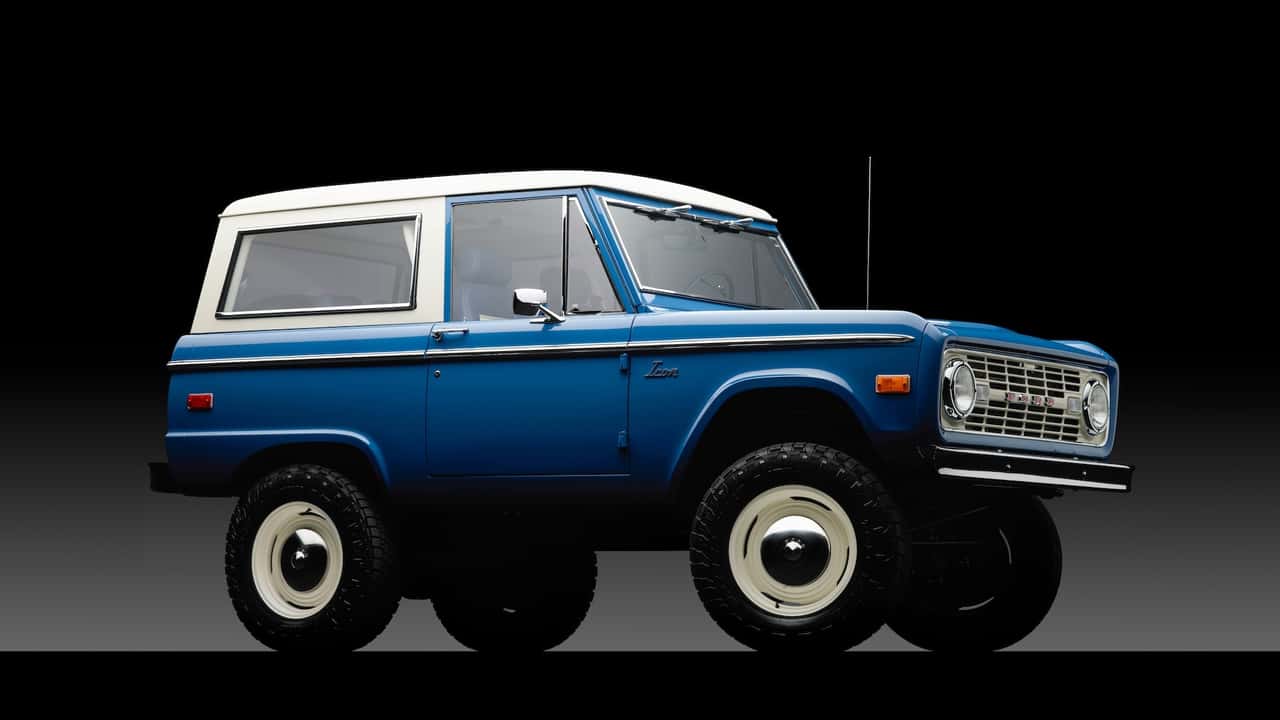
Icon EV Bronco
That’s quite an extravagant amount, to put it mildly. However, the most crucial aspect is what Icon has developed—a torch that represents the significant promise and allure of merging classic toughness with cutting-edge electric vehicle tech. This narrative follows the pattern where one successful venture lifts all others, as I was able to discuss this topic with both Jonathan Ward from Icon and Marc Davis from Moment.
Why Go Icon
If you're not acquainted with Icon, it's a premium brand known for offering extensive customization options. They've gained recognition primarily through overhauling classic American trucks, Toyota Land Cruisers, and select '70s European sedans. Ward has also established himself as a notable figure within the automotive community. Although their restomod services come at a steep price, they are highly praised for maintaining exceptional standards of craftsmanship.
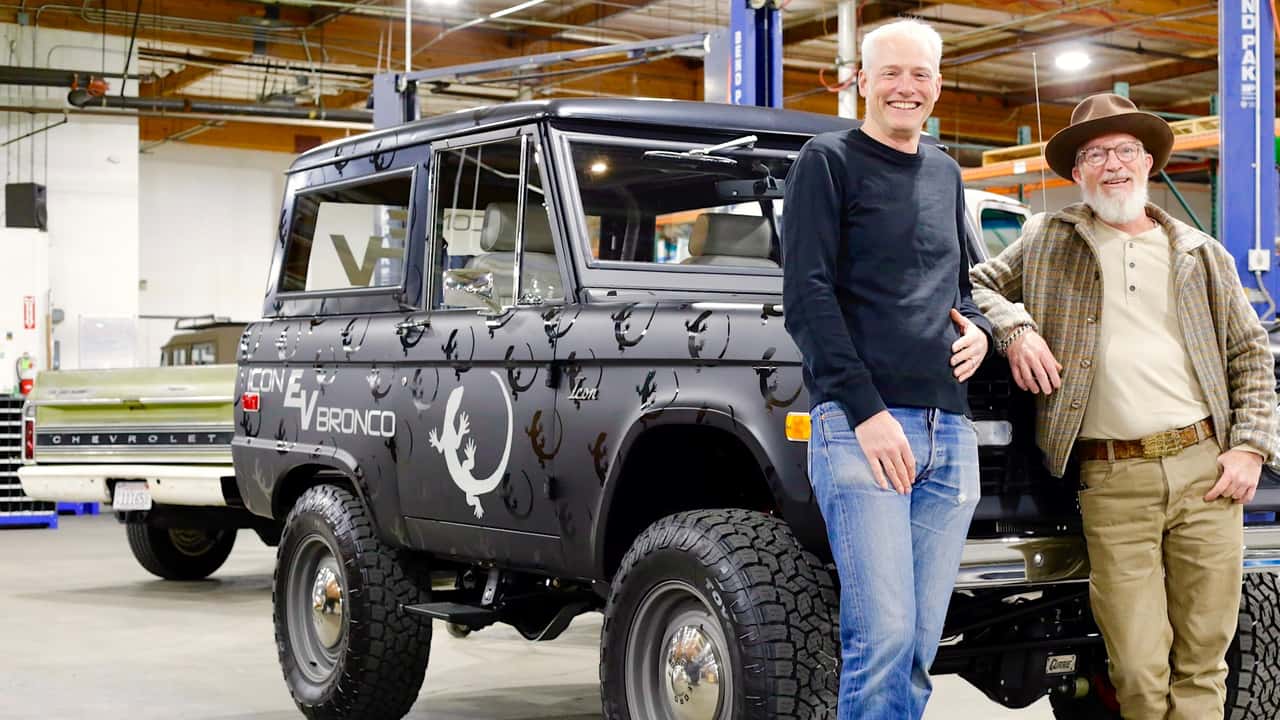
Icon's Jonathan Ward and Moment’s Marc Davis.
The electric version of the Ford Bronco isn't Icon's initial venture into electrified vehicles; they've created an occasional custom electric conversion before. However, integrating all-electric powertrains consistently across their lineup has eluded them—partly because of technological limitations at the time. They have learned from these experiences and marked key areas where improvements were needed until they could develop a fully realized electric drivetrain aligned with their stringent criteria and ethos. This moment arrived once technology advanced enough to support their vision.
"I believe there are problems associated with aiming to be the first to enter the market. I would prefer to be the best to do so since too much is at stake," Ward mentioned lately. Instead of rushing into things on a large scale right from the start, wouldn’t it make sense to adopt a more deliberate strategy? He further noted that he had observed quite ambitious claims made in various companies' promotional content.
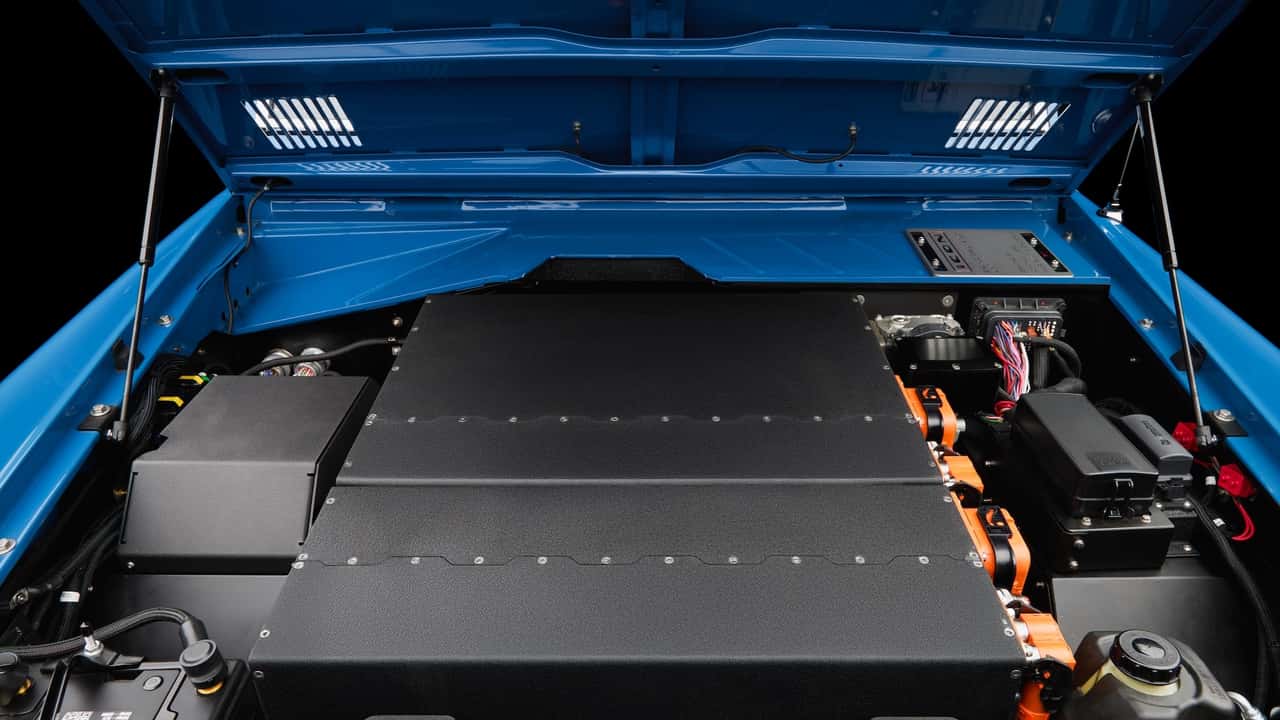
Inside the Icon EV Bronco: A Look at Its Engine Room
After certain technologies, such as custom-made batteries, became readily accessible and other businesses demonstrated their feasibility, Ward decided to join in. Thus, he partnered with Davis from Moment, where Davis has gained significant recognition for his approach to engineering without cutting corners. Recognizing this shared commitment within their team of experts, they believed they could develop a solution that would not only function effectively but also exhibit exceptional robustness.
"It astonishes me how numerous electric vehicle conversion kits include a thermal management system featuring a small transparent tube filled with green coolant driven solely by a 12-volt pump," Ward pointed out, expressing worries over insufficient heat control. "Also, consider regenerative braking. If you charge your car overnight and then drive down a hill for two hours, where will all the energy from the charged ions be directed?" He emphasized that excessive charging can lead to significant hazards; thus, thorough and accurate adjustments must be made to prevent such issues.
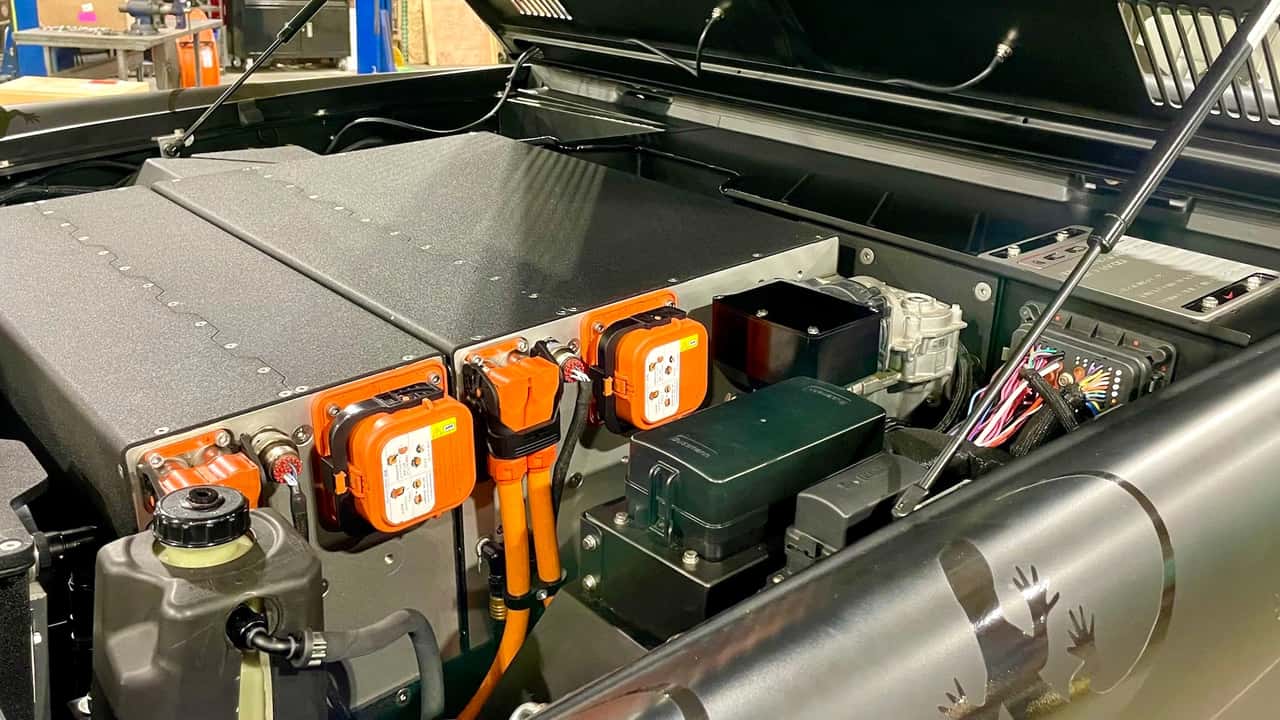
Icon Ford Bronco EV
He then delved into several critical components of his electric vehicle (EV) Bronco plan. "Safety, complete integration, wireless software upgrades and surveillance, comprehensive system unification, transparent thermal management. Variations between peak performance periods and downtime, operational cycles, along with the distinct heating patterns required for the controller compared to those needed for both the battery and the motor—all these factors present entirely separate temperature challenges."
Figuring out everything, with assistance from Davis, wasn’t simple at all. He put in an enormous amount of effort into designing, balancing weights, running simulations, building prototypes, conducting tests, revising prototypes, and repeating test cycles multiple times. This dedication clearly paid off because I got to experience firsthand riding as a passenger and driving the exact same prototype seen in these pictures.
The Build
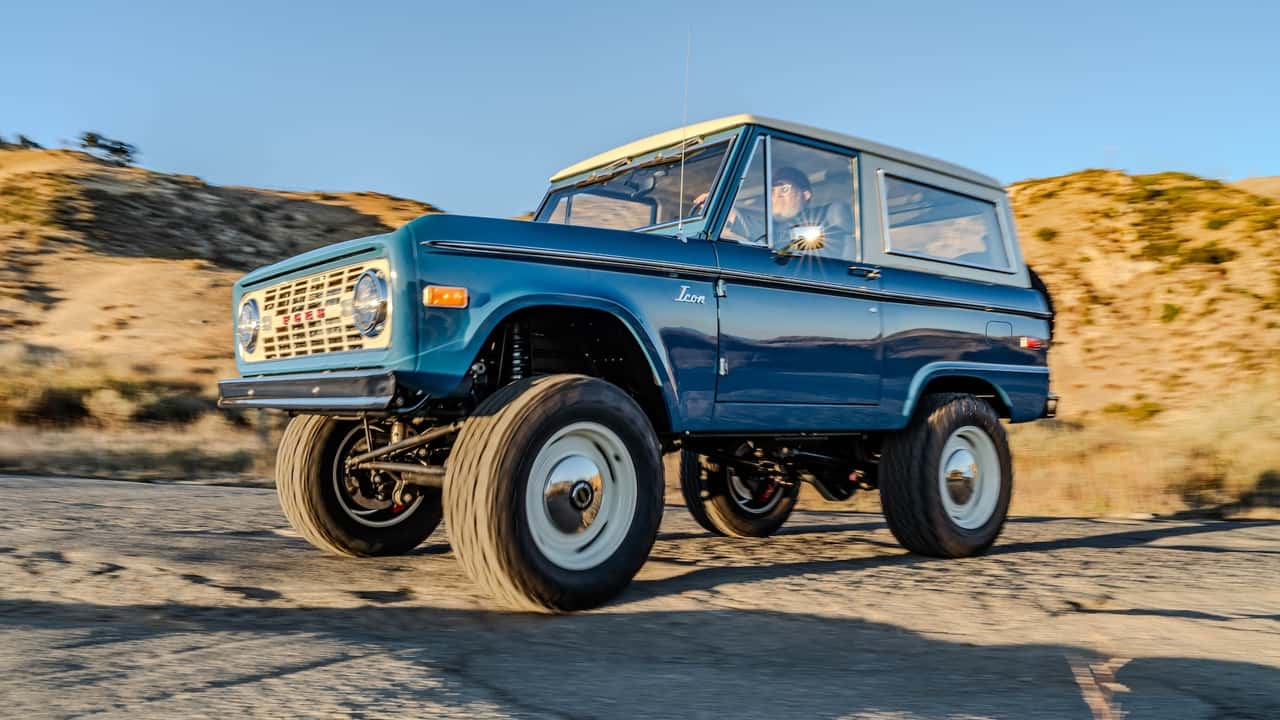
Prior to getting behind the wheel of Icon’s electric version of the Bronco, we took a test drive in its gasoline-fueled model. The superior quality of the interior materials stood out immediately, along with the exceptional overall driving experience. The ride comfort was outstanding, without any creaks or rattles present. Every component felt premium as well: a sturdy yet confidence-inspiring brake pedal, a delightfully precise manual gearshift, and just enough power courtesy of a Ford-provided 5.0-liter Coyote V8 engine. However, what truly impressed us was the steering—it had the active feel you’d expect from an older vehicle, yet provided clear direction when navigating the robust SUV down the highway.
To achieve something similar using only electron manipulation, Icon and Moment adopted a straightforward method. "When examining the design of the vehicle, it remains based on the Icon chassis, maintaining the traditional Bronco feel," Davis explained. Their aim was to merge vintage elements with modern technology, eliminating all superfluous parts in the process—achieving remarkable success.
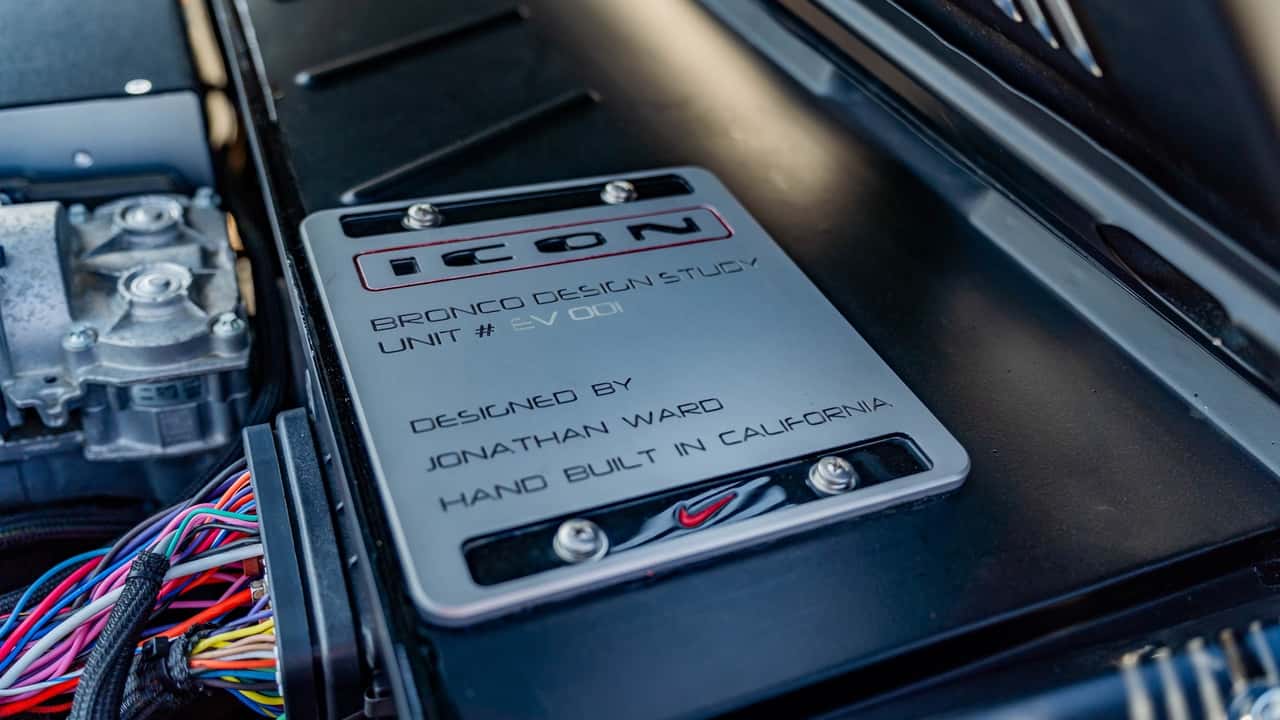
ICON Bronco EV Prototype: Data Label
The heart of the EV Bronco lies in its battery and drivetrain. The battery, supplied by a high-end original equipment manufacturer (OEM) based in Japan, adheres to standards similar to those employed by Volkswagen for their ID series models; however, it features fully customized specifications, boasting an impressive capacity of 105 kWh. Approximately two-thirds of the battery resides within what was once occupied by the engine, while the remaining portion sits towards the rear underneath the vehicle. This arrangement greatly pleased both Icon and Moment, as it naturally facilitated a perfect 50:50 weight balance from the outset.
The drive unit is a re-geared, completely re-serviced, and fully upgraded Tesla motor sporting a different controller, circuit boards, inverter, and more. It had the power density that Icon needed, and despite Ward’s preference of going with no re-purposed parts, ultimately they took this route because, in his words, “No one can touch that motor.” From there, output goes through a more conventional ICE drivetrain.
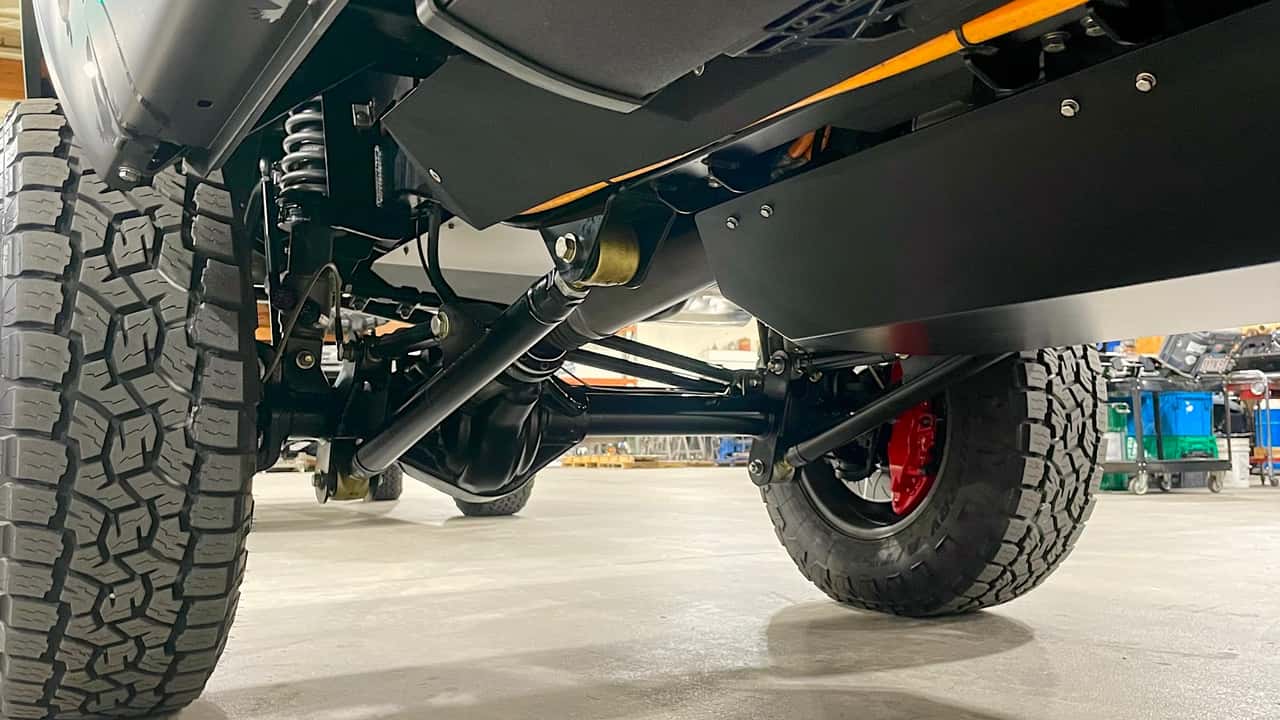
Icon Ford Bronco EV
The engine is positioned at the center of the specially crafted Art Morrison frame equipped with a limited slip differential, which distributes power evenly between a sturdy front axle featuring a locked Dana 60 high-pinion diff and a robust rear axle fitted with a Dana 44 limited-slip unit. If your aim is to maintain a Bronco platform with rigid axles, installing an engine for every differential would contradict traditional practices of straight-axle off-road driving—practices like extensive suspension movement, flexible axle operation, and other specialized characteristics designed specifically for rough terrain.
Beneath the surface, you'll find a large radiator equipped with two distinct cooling systems—one dedicated to the batteries and another for the engine. Additionally, every wire used is of superior quality, meticulously installed, includes waterproof connectors, and prioritizes ease of maintenance in the future. This setup would make any electrical engineer thrilled.
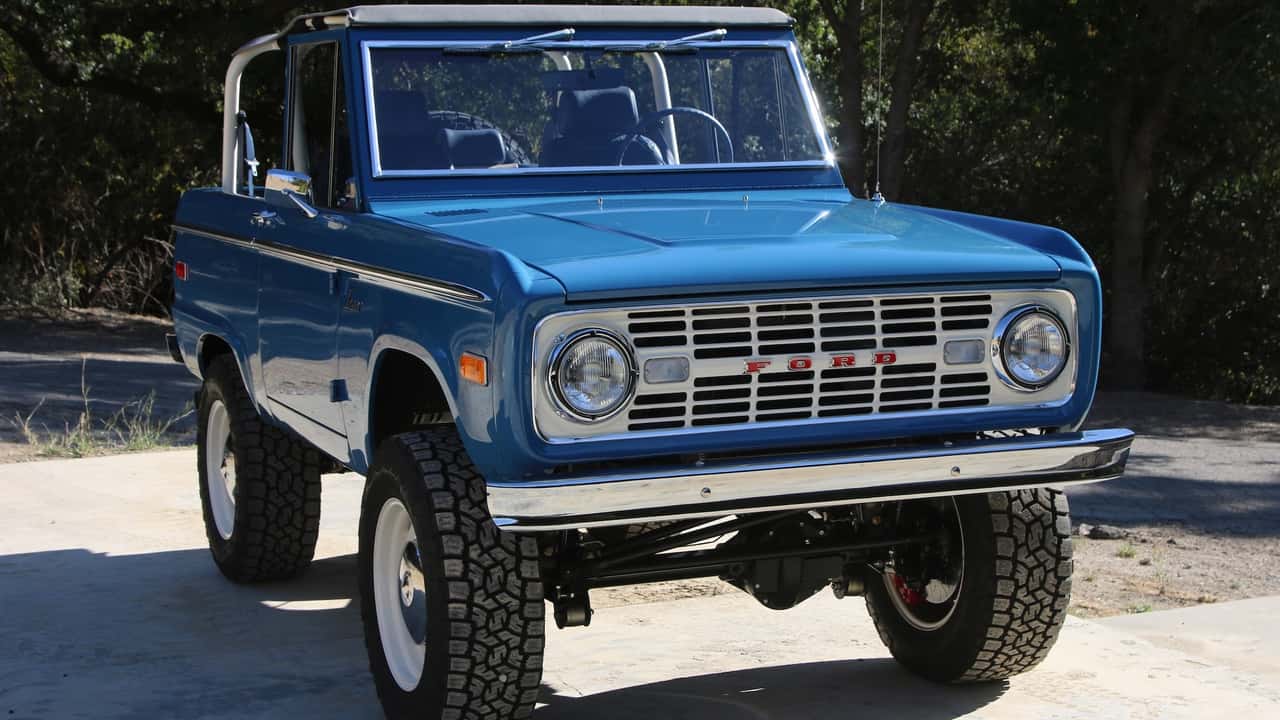
The specifications are fairly modern. This model features a 400-volt system, delivering 440 horsepower and 500 pound-feet of torque, with an estimated driving range between 175 to 200 miles (considering its weight of 5,420 pounds). Additionally, it supports 6.6 kW Level 2 charging along with CCS DC fast-charging at undisclosed rates.
To monitor everything closely and provide software updates moving forward, every model will come with over-the-air updates, coupled with remote system monitoring which should simplify service procedures later on for certified garages. Ward expressed particular satisfaction about incorporating OTA updates during our conversation since Icon can readily share any fine-tuned driving modes, ensuring optimal performance at the helm.
Driving It
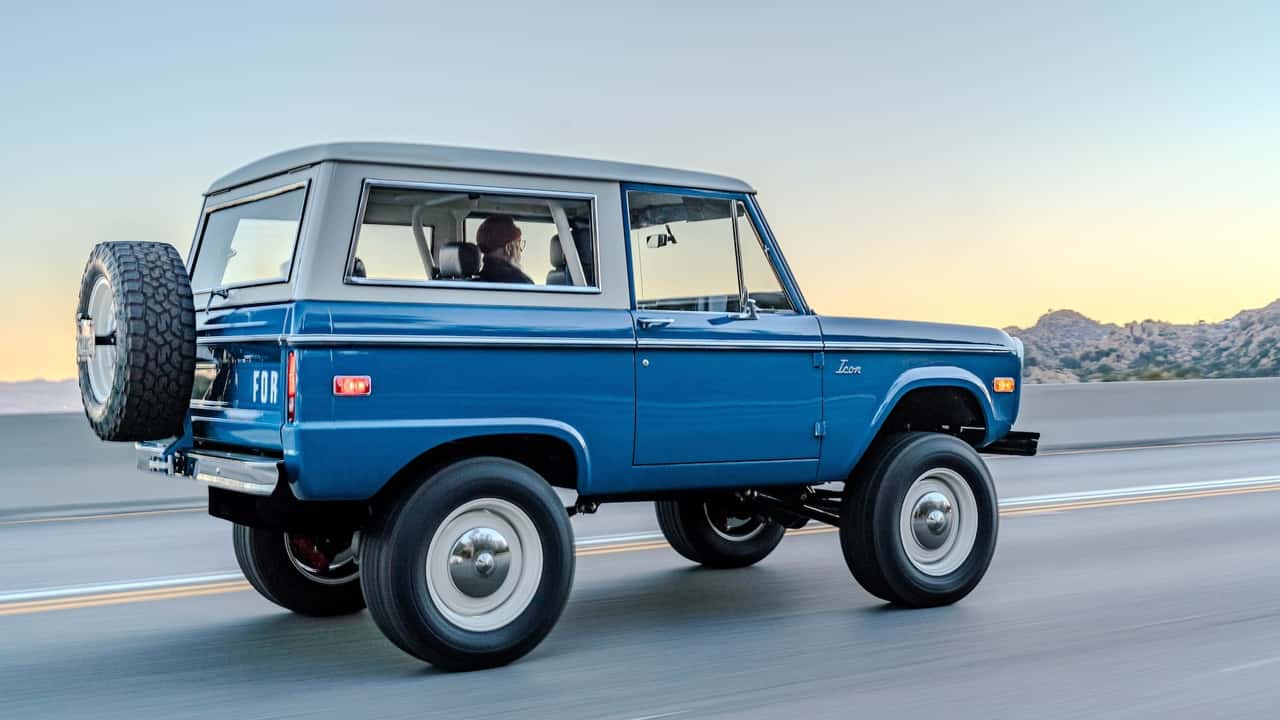
Jumping into Icon’s electric version of the Bronco felt quite similar to its gas-fueled counterpart, but there was one notable distinction. Alongside the traditional analog gauges showing speed, additional digital displays provided clear readings for charge level, motor and battery temperatures, as well as power delivery in kilowatts.
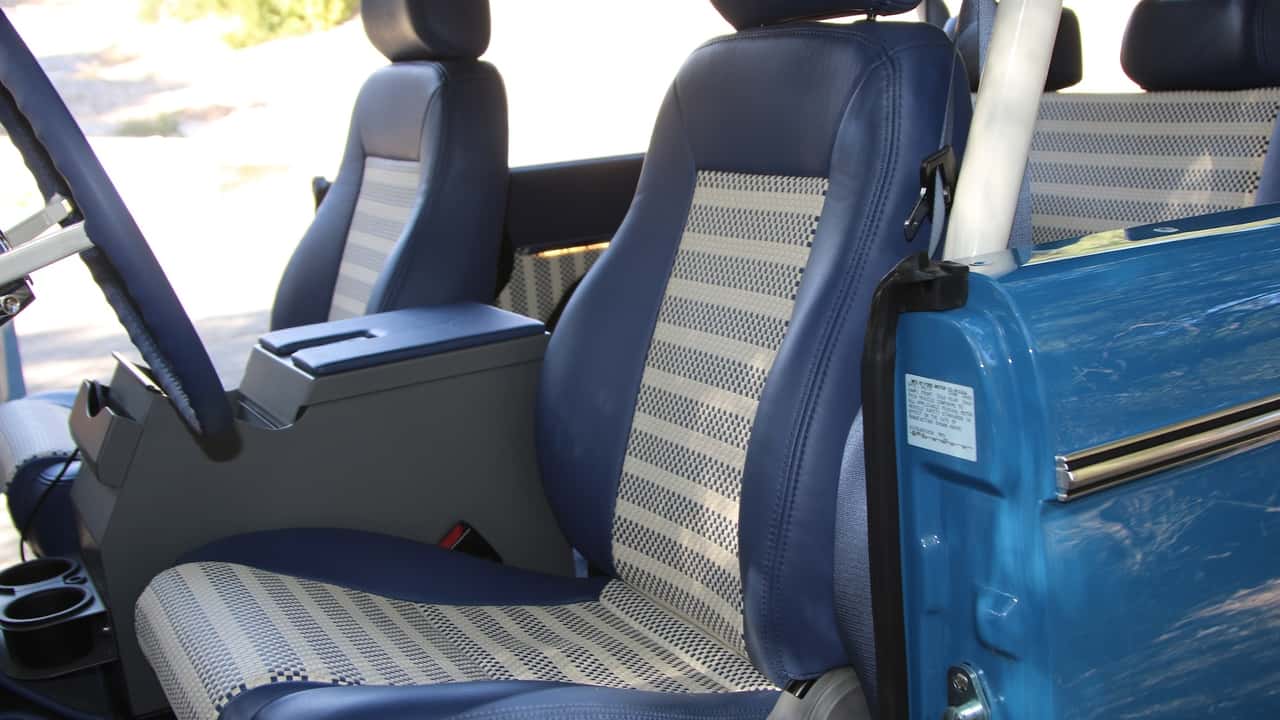
BR EV Front Seats
Activating it involved placing a key into an actual locking mechanism and giving it a turn; however, the automatic return feature served merely as a decorative element. To direct the powerful Bronco forward or backward using the electric motor, one would pull back on a classic PRNDL gear selector—often referred to as a column shifter—which provided slight resistance when shifted up or down. This iconic component gained fame for being prominently featured in '80s police chase movies involving cars.
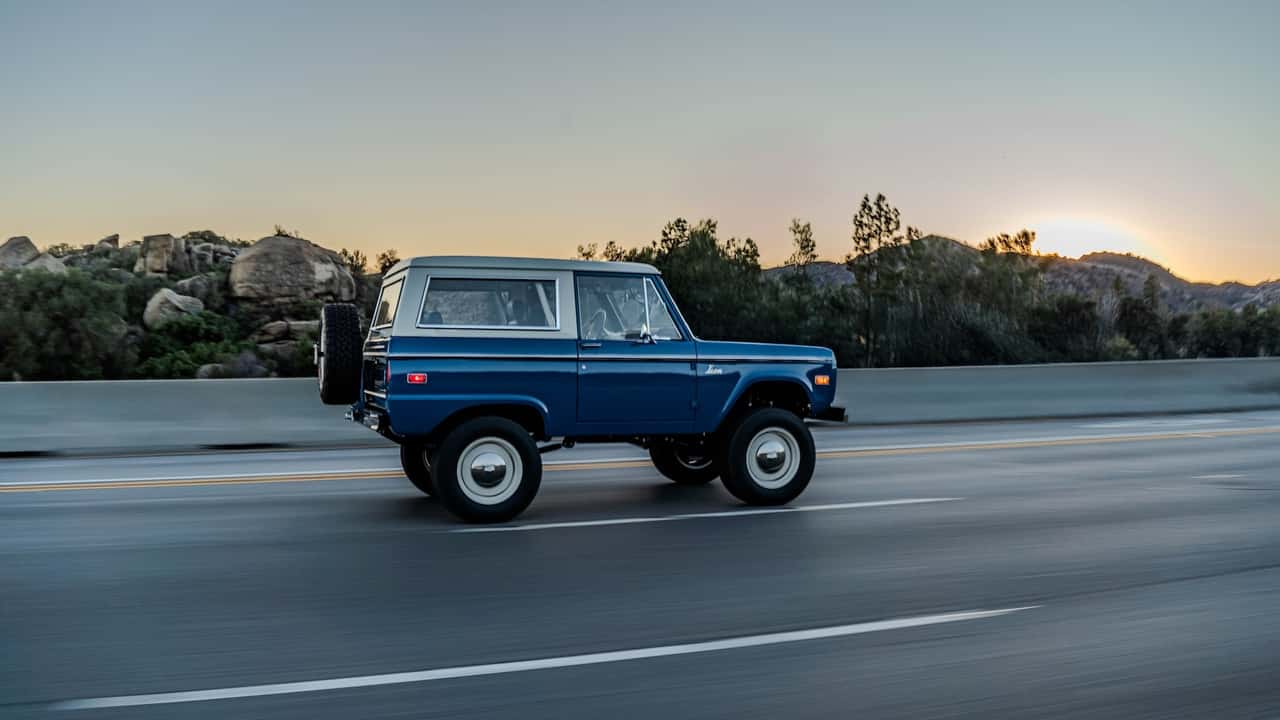
After setting off, the drive proved to be quite... typical. Similar to the V8 Bronco, there were no creaks or noises, and the comfort of the journey remained steady without losing road feel. However, the standout feature was undoubtedly the steering: Icon employs an electric power steering system that circulates hydraulic fluid via a standard steering box, resulting in exceptional performance. It offered a busy but assured handling, much akin to its internal combustion engine counterpart.
The output, despite being highly efficient even in its most economical setting, still managed impressive performance. Ward and Davis noted that achieving the right balance between pedal response and electric assistance required significant effort. This near-production version felt excellent: It offered smooth power distribution without overpowering the responsive handling and compact build with a wheelbase slightly over 90 inches.
Then, when Ward got behind the wheel and put it in its most powerful mode, the limited-slip differential out back certainly gave us a piece of its mind as we shot off down the road like a rocket, straight and true.
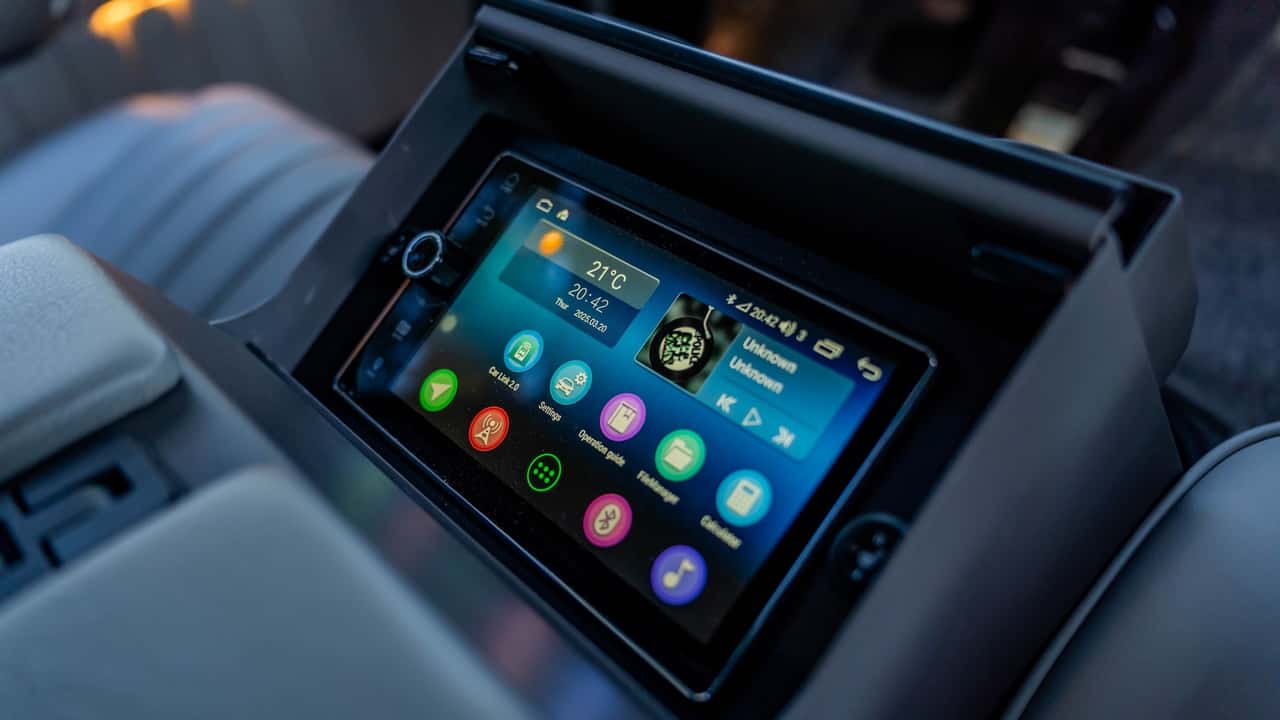
ICON BR EV Mule Center Console Display Main Screen
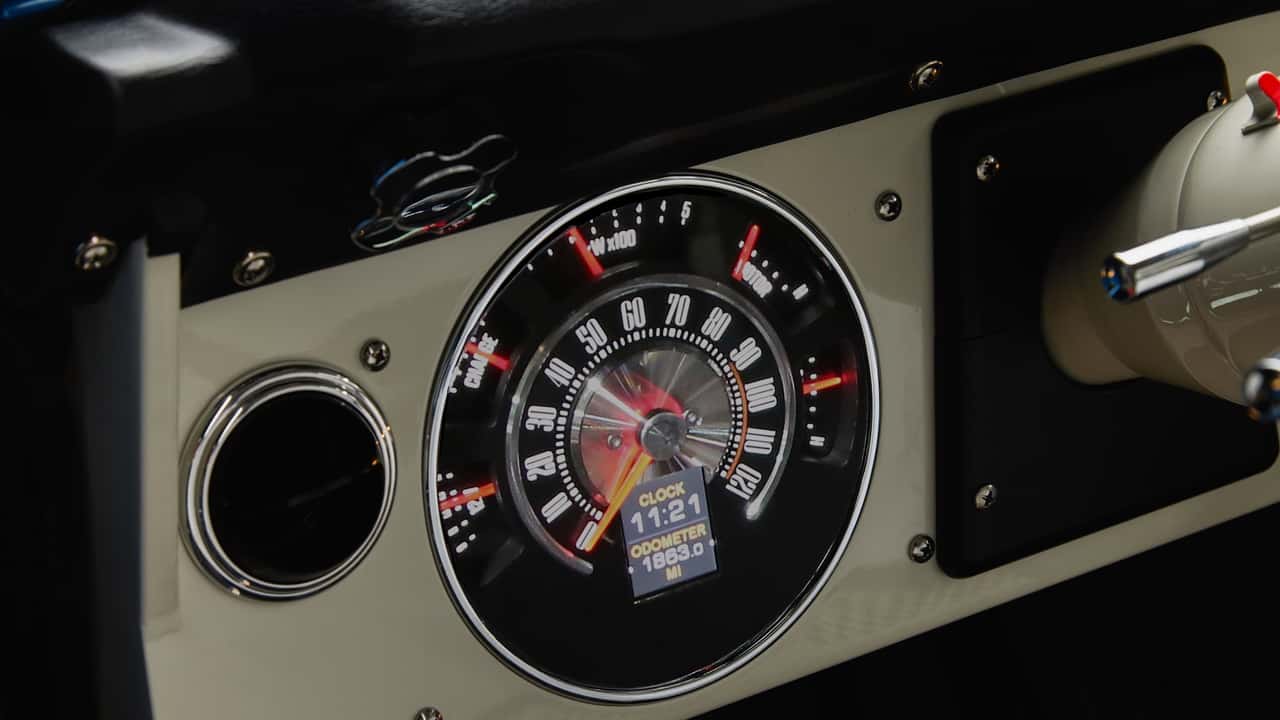
IconEVBronco Interior Gauges ALT
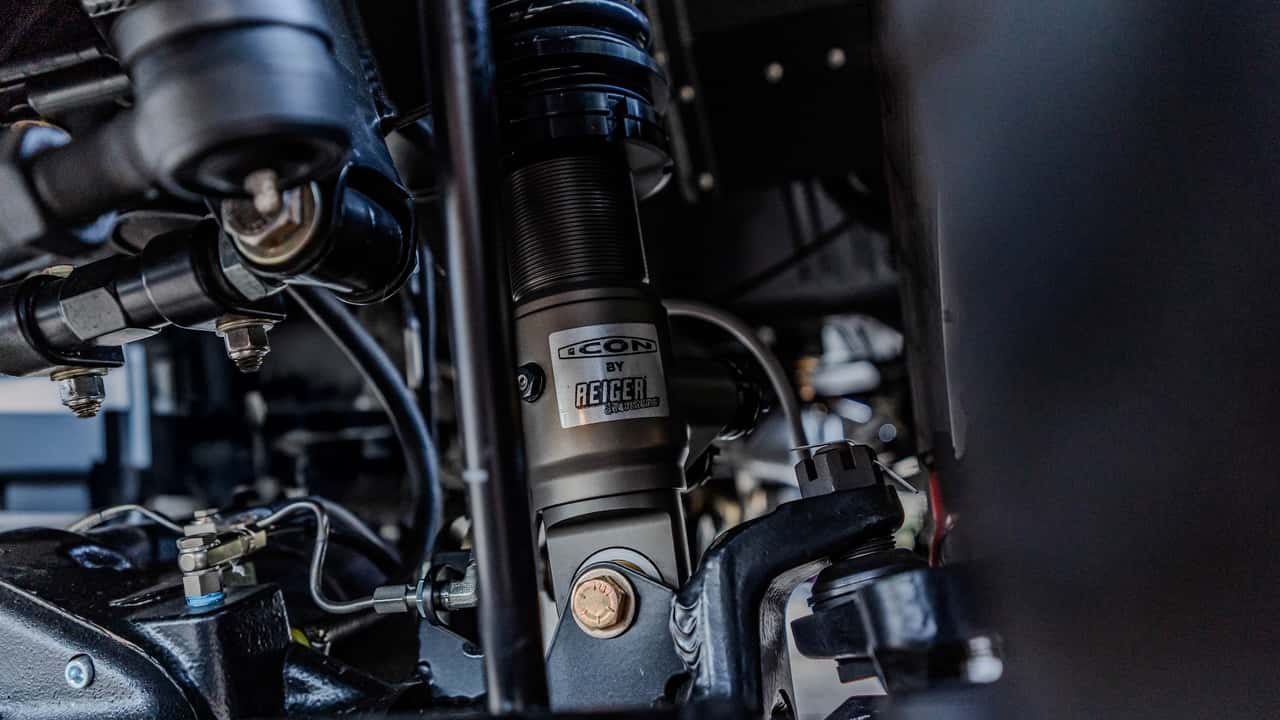
BR EV ICON Suspension Specifications Details
Ward further mentioned that throughout its journey covering approximately 2,300 miles, the electric Ford Bronco has traversed numerous Southern California Off-Highway Vehicle (OHV) trails, which are among the finest in the nation as an addition. The vehicle also employs regenerative braking technology; however, this feature does not activate when the battery is almost fully charged.
Why It Matters
Icon and Moment have developed an innovative fusion of traditional off-road truck aesthetics with cutting-edge electric vehicle tech. This shows that fans can enjoy both engaging performance and impressive articulation along with substantial suspension travel—all within a robustly engineered package capable of handling intense conditions and various terrains. In fact, their battery packs meet the rigorous IP67 waterproof standard, ensuring they remain unaffected even when fully immersed in water up to one meter deep for as long as half an hour.
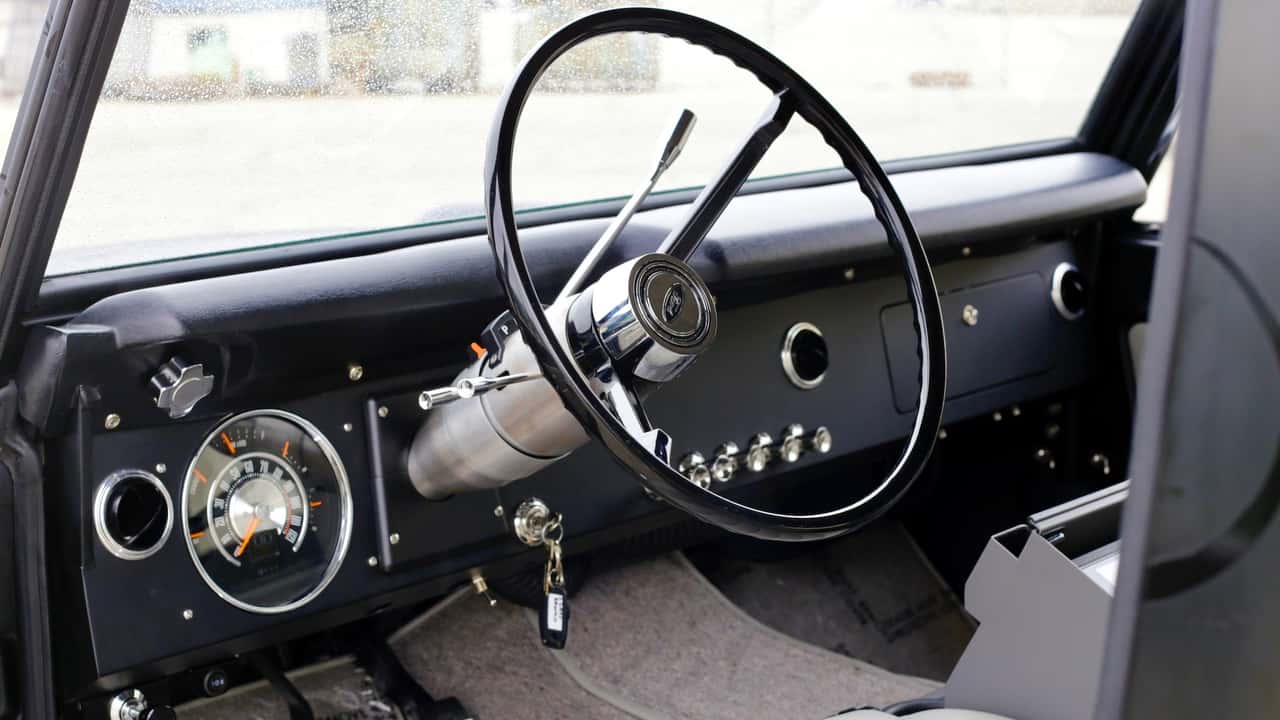
Icon Ford Bronco EV
Between this fascinating marriage of engineering, plus the fact that a lot of the inputs we all savor in such fare are preserved, the future is bright for creating engaging EV experiences. As Icon and Moment are regarded as top names in its industry, there’s a good chance that more shops will dig into the custom EV-powered off-roader space, creating well-thought-out builds that check every box and satisfy our love of driving.

Furthermore, this trend might lead to an increased number of motor, battery, wire, and other component makers providing products for easy assembly, sparking a revival in the electric vehicle industry. During my conversations with Ward and Davis, I frequently inquired about their supply chain and collaboration experiences. Typically, they conveyed that Icon was relatively minor compared to larger players—though this dynamic has potential to shift over the next few years. The prospect of supporting burgeoning American small enterprises venturing into this field genuinely appeals to me.
The icon has shown that all of its remarkable qualities aren't limited to asphalt paths or gasoline engines, and that even greater things are still ahead.
Peter Nelson is a contributing author for Motor1 and InsideEVs His work has been featured in The Drive, Winding Road, Car Bibles, HotCars and more.
More EV Conversions
- Electric Ford Mustang Fox-Body Retains the Manual Transmission Moves Forward
- The Initial Mazda Miata Functions Well as an Electric Vehicle
- The 1928 Ford Model A Pickup Converted to an EV Is a Prohibition Era Electric Vehicle
- This Tesla Plaid-Driven Cobra Accelerates Insanely Fast
- This Hellcat Is Powered By A Tesla Model S Plaid Engine: 'It Matches Exactly'
- Audi's Electric Revamp of the A2 Seems Surprisingly Sensible
